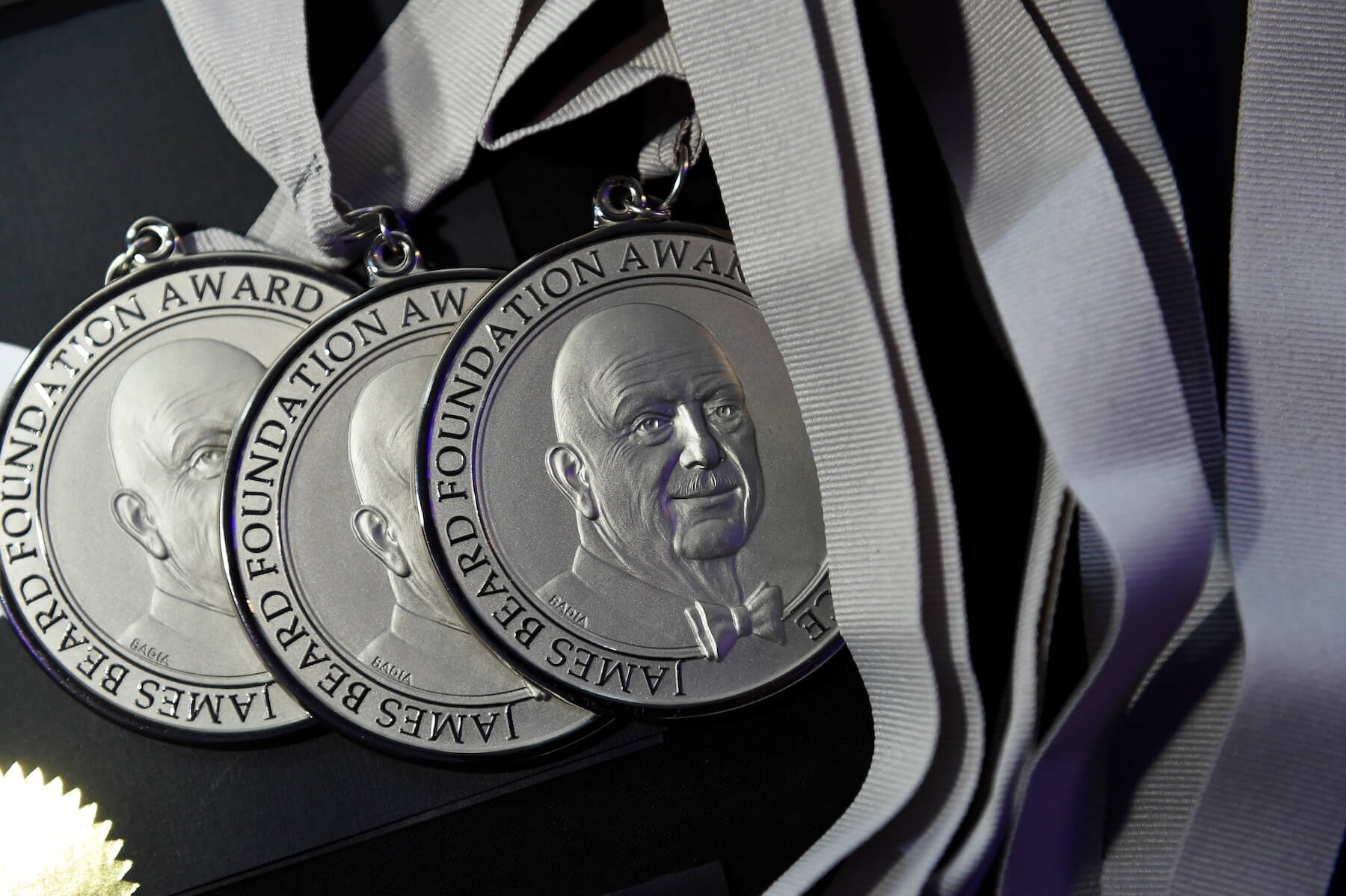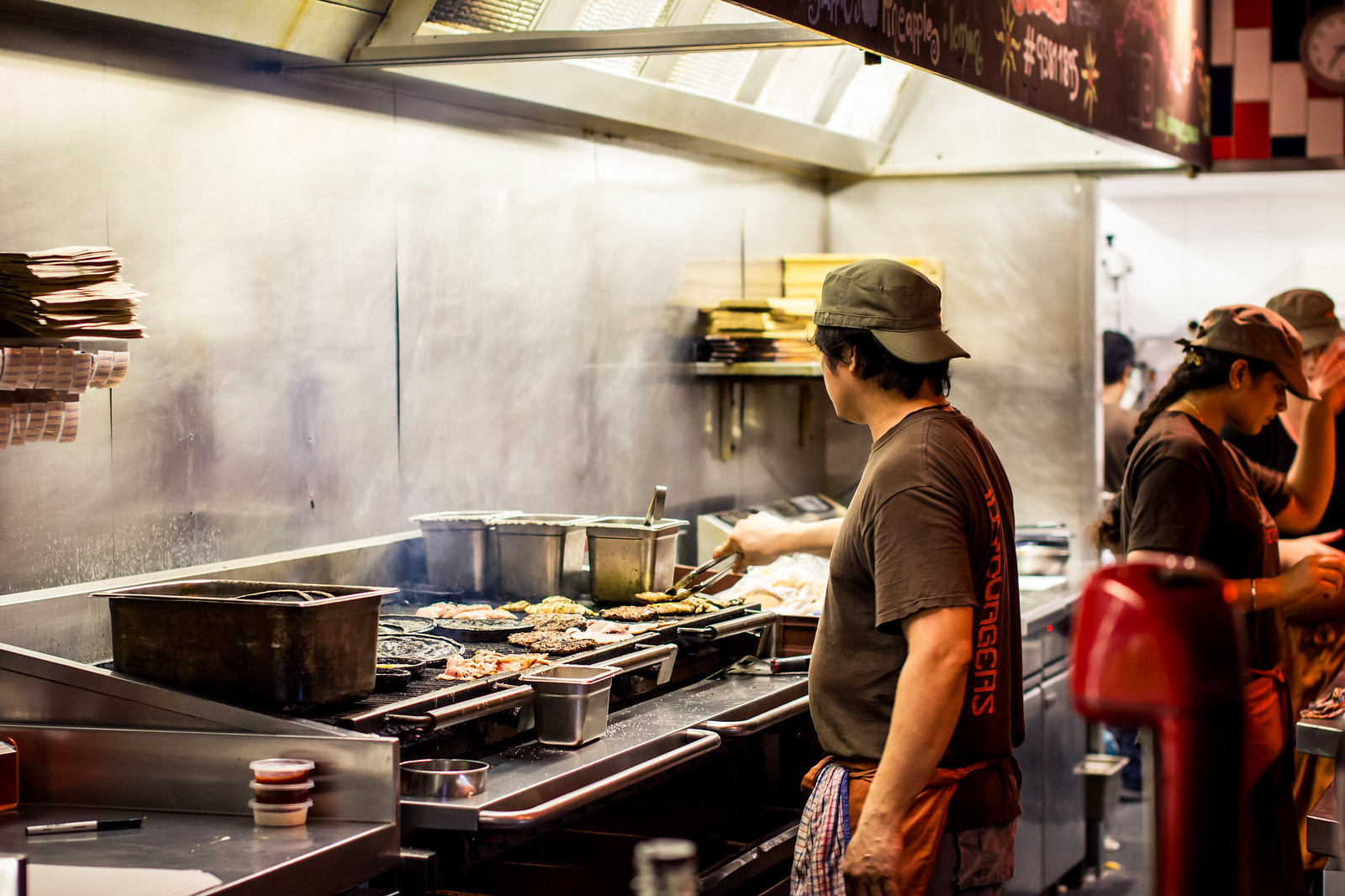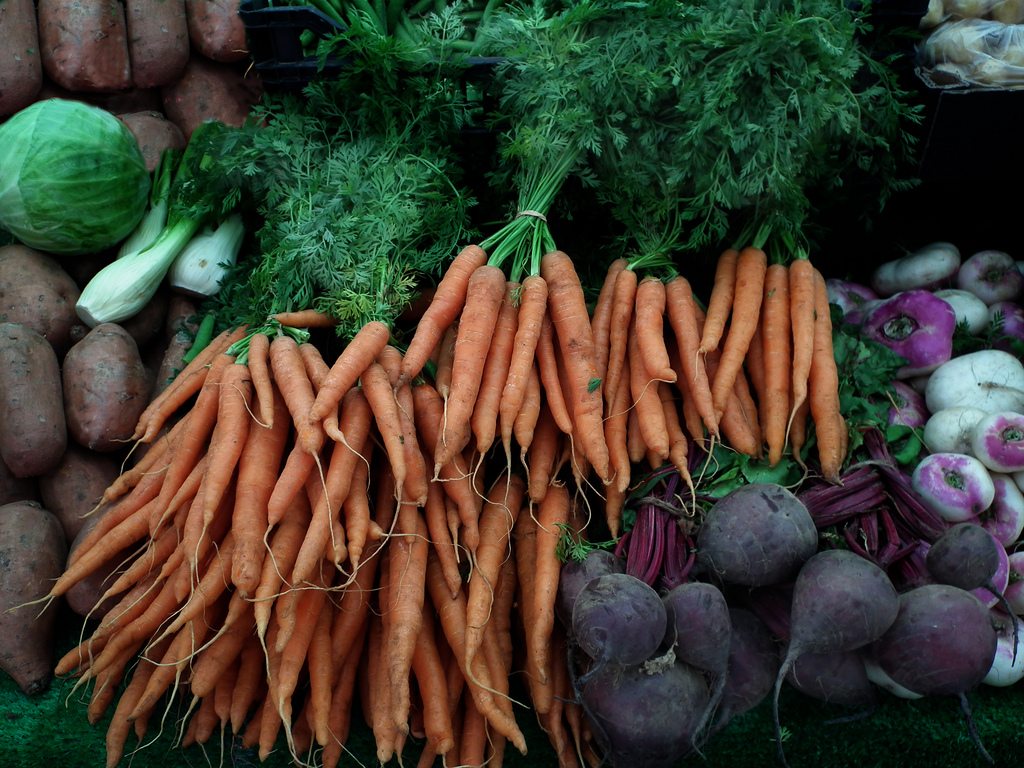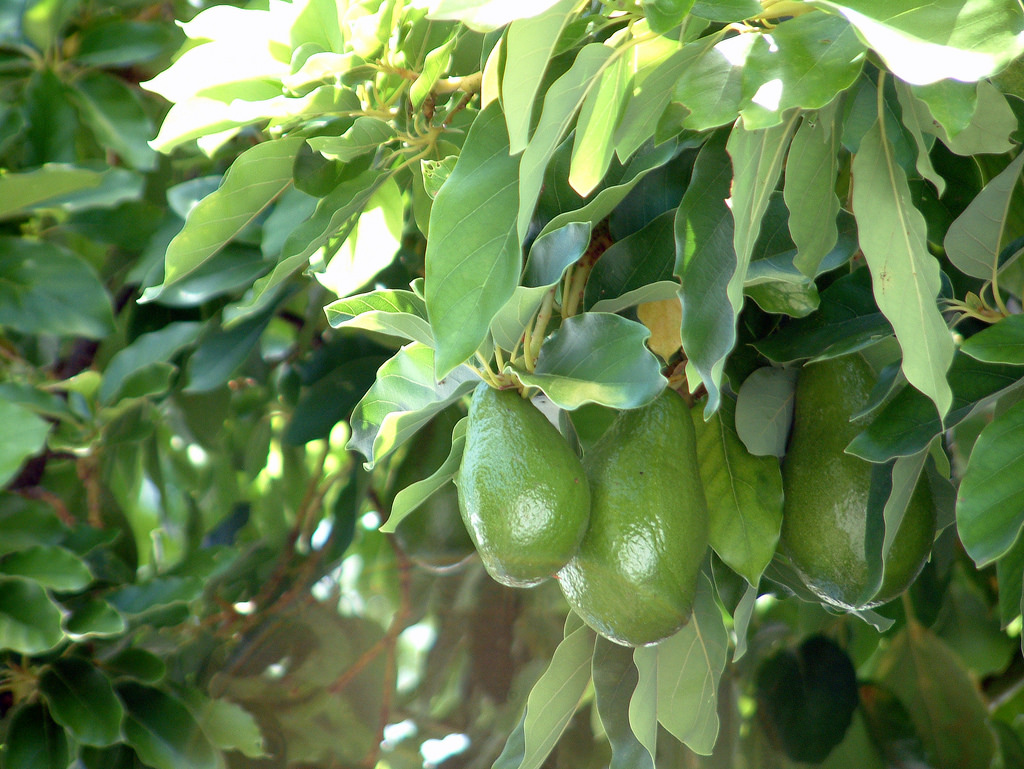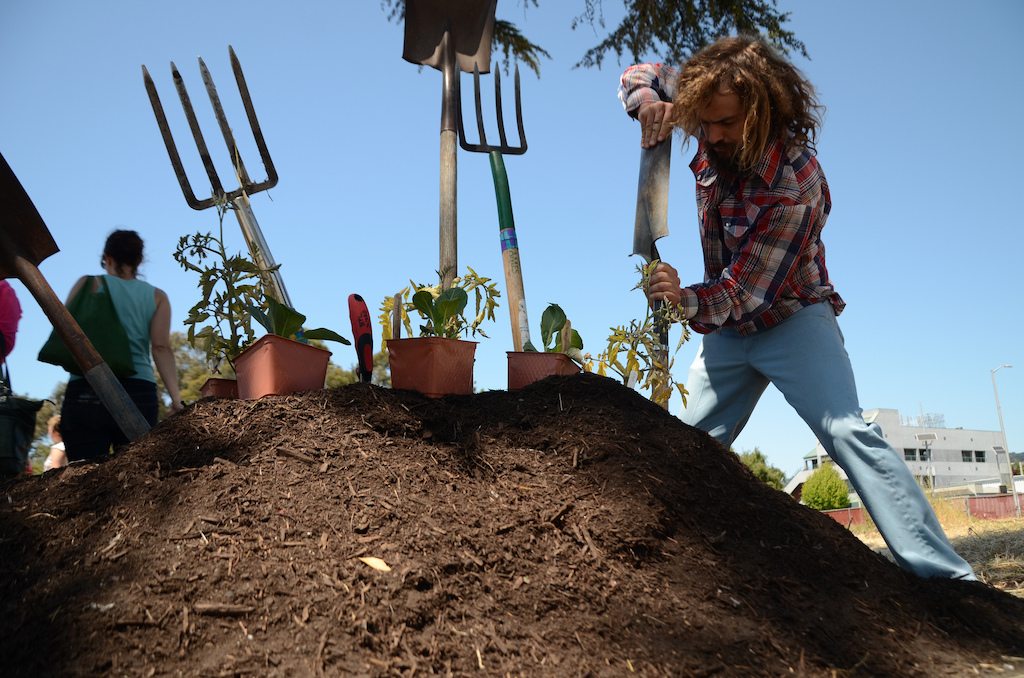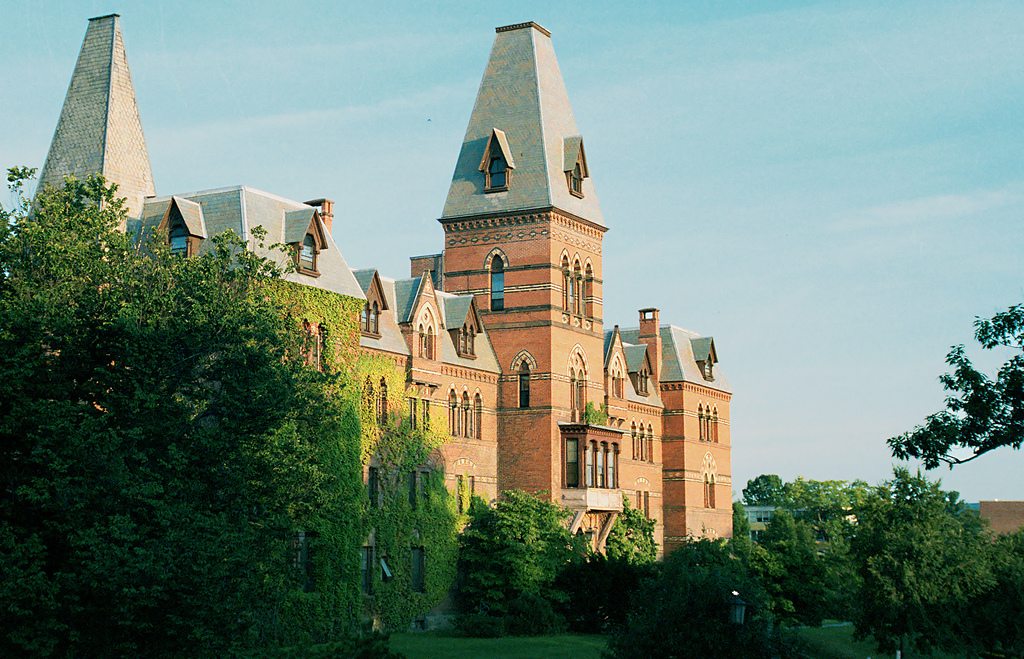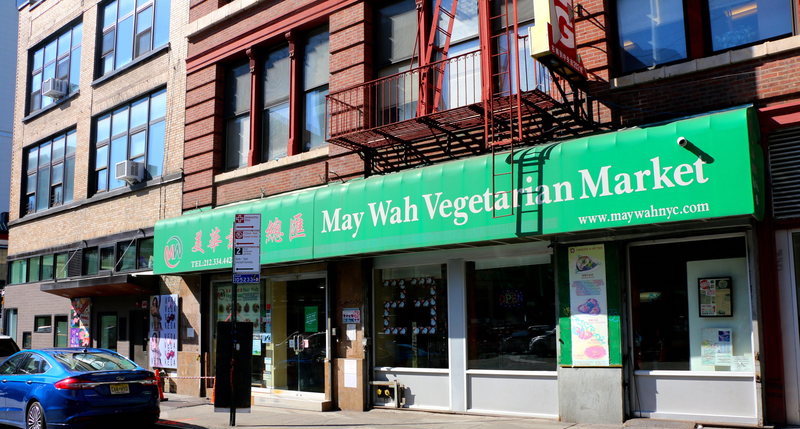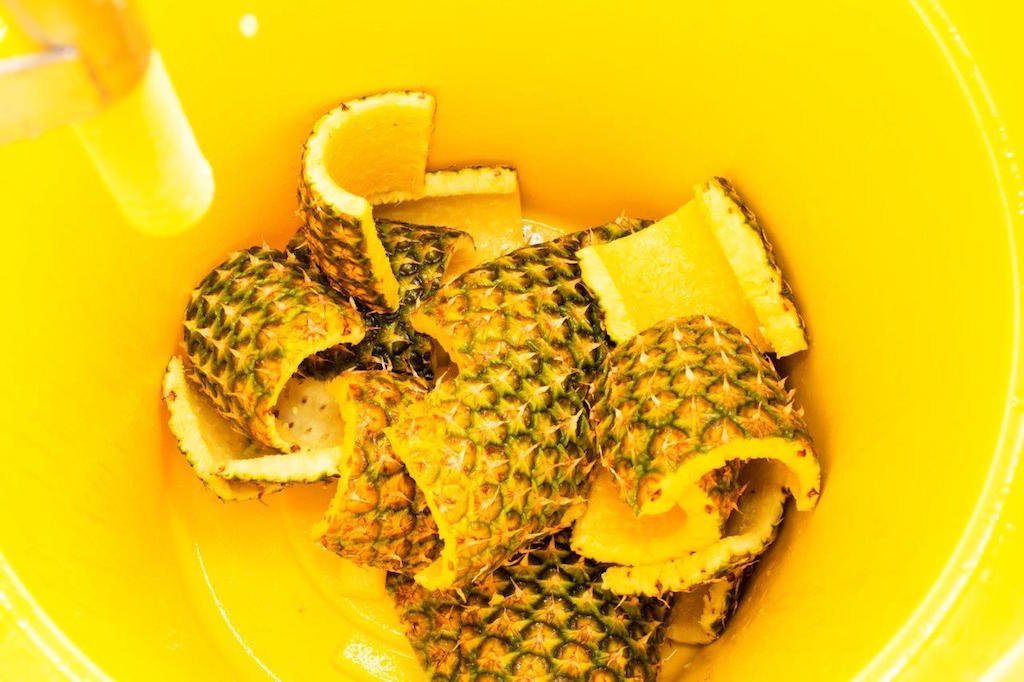
Baldor
Baldor, one of the largest produce distributors in the northeast, has recently taken a new, unprecedented approach to food waste: Instead of throwing away its fruit and veggie scraps, the company wants to convince people to eat them.
In December, Baldor announced it was going to take its Fresh Cuts program 100% waste free by selling its huge volume of produce trimmings to food businesses. Fresh Cuts is located inside Baldor’s 100,000 square-foot warehouse in Hunt’s Point, the Bronx; there, mangoes tumble down conveyor belts, while a strange moving staircase ferries tubs of shredded lettuce towards the ceiling. A hulking contraption bleeds carrot juice. My guide asks me to peer through the slats of a large, metal automaton: inside, robotic arms ferry pineapples from blade to blade, where they’re peeled on a whirling slicer and cored on a lathe. This is where carrots are turned into carrot sticks, pineapples into chunks and slices, and cabbage into slaw for consumers and restaurants alike.
In the process, the plant generates tens of thousands of pounds of “trim” a day—most of which gets sucked through a vast network of pipes into an enormous dumpsters outside, to be hauled away. A lot of good stuff gets tossed in the process. One of my guides, Johanna Kolodny, Baldor’s food systems consultant, pauses before a trash bin brimming with mango cuttings. There are plenty of long, flat pits, but there are also skin-off chunks and full, peeled fruits, golden and healthy-looking.
“That really upsets me,” Kolodny says, shaking her head. “I just want to reach in and eat one.”
For now, those mango parts are going in the garbage. But if Baldor has its way—giving Fresh Cuts scraps a second life by selling them to food businesses—they won’t be going to waste much longer.
From scraps to SparCs
Thomas McQuillan, the man in charge of overhauling Fresh Cuts, talks about the program with barely-contained excitement. But he’s not a food guy by trade. Before coming to Baldor a year ago, he was president of a large construction equipment supplier; he was hired to look for opportunities to eliminate inefficiency and save money. No one expected he’d find them in the massive dumpsters out back.
It didn’t take him long to discover that food waste was a problem at Baldor. “My first thought was, ‘OK, easy. We’re going to send it to composting. Done,’” McQuillan says. It wouldn’t be that easy. Composting the scraps meant paying someone to haul them away, and the lack of Baldor-scale facilities nearby meant adding a lot of carbon emissions to the company’s environmental footprint. To McQuillan, composting seemed like a dubious tradeoff: yes, it would send less to the landfill, but it also meant paying hundreds of thousands of dollars a year to pollute the air.
Then came a call from Adam Kaye, vice president of culinary affairs at Blue Hill Stone Barns, Dan Barber’s celebrated Hudson Valley restaurant and educational center. Kaye wanted to know if he could buy food trimmings for WastED, a gourmet meal he and Barber would cook with ingredients headed for the dumpster— a provocation intended to draw attention to the high quality of wasted food. The request opened McQuillan’s eyes.
“I went, wait a minute, it’s food!” he says. “What are we doing?”
That realization was just a starting point: it’s one thing to know your food scraps are edible, and it’s another thing entirely to sell them. You just can’t ask a customer, “Would you like to buy some garbage?” Changing Baldor’s operations wouldn’t be sufficient, McQuillan realized—the company would have to change its language, too.
A client, Fresh Direct’s Helen Park, offered a suggestion for how to christen the new product line: “Why not call it sparcs?”
Sparcs, as in “scraps” backwards—a name that avoids the stigma of garbage and suggests something small with catalyzing force. Baldor restyled the word as “SparCs,” highlighting the unorthodox nature of the product, and McQuillan hasn’t looked back.
Selling SparCs: big costs, big benefits
The SparCs program isn’t something Baldor can just tack on to its existing model. When McQuillan says it’s “a big process change,” he’s downplaying the transition’s scale: It’s a huge change. Collecting SparCs means making tweaks throughout Fresh Cuts, a program with hundreds of products, hundreds of employees and thousands of moving parts.
The biggest challenge? Changing the way employees do things on the floor. “The staff that works in Fresh Cuts has been trained to handle the food a certain way all these years,” McQuillan says. “And now, we want them to treat it differently. That re-training comes at a cost.”
Then, there’s the logistics. Walking through Fresh Cuts today, you’ll see hundreds of slate-gray bins parked next to chopping stations or below machine chutes, waiting for falling trim. Slowly, Baldor’s swapping out those bins with bright yellow replacements—a signal that a receptacle contains SparCs, not scraps. But it’s not as simple as changing trash can colors. Since new SparCs must be handled as products, not discards, there will be hundreds of new SKUs to itemize, track, log, and store. There are also the added packaging expenses. “We have to tag it, bag it, box it, put it in totes,” McQuillan says.
An upcoming expansion—Baldor plans to add almost double its current facility, adding 100,000 square feet to the existing 100,000—will help the company as it tries to manage the retooled Fresh Cuts program. That doesn’t mean it will be easy. The increased logistical complexity took months to get right. In program’s early days, when Blue Hill was ordering SparCs for trial WastED menus, things were pretty touch-and-go.
“There were a number of trial run deliveries. They had to generate new codes, and make sure the products were getting into a bag, into a box with the right SKU and a label on it, onto the right truck. It took months to get to that point,” Kaye says. “They had to change their customs and their culture, which were only set up to extract all this stuff from their system. In a company of that size, which has huge, huge volume and super high-tech inventory shipping and logistics systems, how do you suddenly say, ‘actually, no, we do want those things—and in a box, on a truck, that gets to Blue Hill at 9 AM, and 50 pounds of it’? That was the big challenge.”
After months of testing and improvement, the program finally has a working model—though new offerings are still being introduced and tested on a product-by-product basis.
Taken together, it’s a lot of work that McQuillan says is worth it—even from a purely financial perspective. Though the SparCs program requires long-term thinking, up-front expense, and short-term sacrifice, it would ultimately be more costly for Baldor to keep throwing food scraps out.
Waste is expensive. Baldor pays five to eight cents a pound to have someone haul processing byproducts away—hundreds of thousands of dollars a year. But McQuillan says the current testing phase shows that a working SparCs program could more than offset that cost. Carrot SparCs, for instance, sell for 15 cents a pound in a 1,000-pound tote, or 30 cents a pound by the 50-pound bag. Instead of paying for removal, the company’s getting paid to take the SparCs elsewhere.
“When we first started, the goal was to reduce our expense to eliminate this product,” McQuillan says. “We’ve morphed into ‘let’s find a way to make money on this if we can.’” The program’s profit generating potential has been “a pleasant surprise.”
Who’s buying?
To hear McQuillan tell it, Baldor’s scraps have great potential appeal for food companies. In applications where whole fruits and vegetables aren’t necessary—juice or soup, say—Baldor can provide a steady stream of ingredients at high volume and low cost. For some companies, these items are easier to work with, too: unlike produce that comes out of the ground, Baldor’s scraps have gone through one phase of processing already.
“You save them cutting, peeling, cleaning,” McQuillan says, “these huge steps in the process.”
Not that shifting to scrap is always a cakewalk for clients. Take Misfit Juicery, a Washington, D.C.-based company that sells bottled juice made from “ugly” produce—perfectly good fruits and veggies that don’t fit the rigid standards of the conventional supply chain. Misfit has been a perfect candidate for Baldor, though it’s taken some back-and-forth to make things work.
“For our first run with Baldor, we were getting mangoes—everything, the cores, the pits,” says Misfit co-founder Phil Wong. “Right away we figured, ‘OK, we probably can’t use this.’ At the same time, there are things like carrot SparCs—those are functionally the same as full carrots, there really isn’t a difference for us, functionally, in terms of yield. So most of it is simply stipulating to Baldor what we need and how we need the produce to come. They’ve been great in accommodating us.”
Of course, there are some products that won’t be fit for humans to eat—mango peels being one example. But they make great pig feed—Flying Pigs Farm’s Mike Yezzi feeds SparCs shipments, several thousand pounds a week, to his herd of heritage swine. The stuff that even pigs won’t or can’t eat—like browned onion skins, which are inedible but high in carbon—is still a great candidate for anaerobic digestion.
Garbage removal giant Waste Management, in fact, is looking for new sources of organic matter to feed their anaerobic digester in Newtown Creek, Brooklyn. In theory, the company could almost single-handedly solve Baldor’s waste problem—the digester could take as much as 20,000 pounds of organic waste a day off Baldor’s hands, breaking it down into a slurry that would be introduced into the digesters (which currently create energy from human bio solids). Waste Management believes the introduction of organic food waste will greatly increase the output of methane, creating more energy, and Baldor would be a great source of raw material: unlike the waste collected from restaurants and residences, Baldor’s food scraps are already free of contaminants and don’t require extra sifting.
But if Baldor’s thinking about its SparCs as potential food products, the idea of carting them in huge volume to a digester—which would have been seen as a victory only months ago—has lost its appeal. Why pay to transport what it can sell? Baldor’s still exploring options with Waste Management, but by offering less volume, the company’s effectively saying, “we think our product is worth more than that.”
Based on what Baldor currently processes, McQuillan estimates that, ultimately, 70 percent of Baldors SparCs will feed humans, 20 percent will feed animals, and Waste Management can take the last 10 percent for Newtown Creek, numbers that make sense environmentally and for the long-term heath of the SparCs program.
The program still has a long way to go: Currently, McQuillan estimates that only about 10% of the SparCs Baldor generates are being purchased. But slowly, that percentage should rise.
“We’re quickly discovering everything from our food process can be repurposed,” McQuillan says, “and we’re excited to report that the days of the grey bin are pretty much numbered.”
As the program grows, it will continue to change how Baldor and its clients do business; if successful, the initiative may provide large food processors worldwide with an impactful new waste management model. Ultimately, the reenvisioned Fresh Cuts program demonstrates the way accurate food waste accounting can transform a business, just the way it transformed McQuillan. Once you start seeing the true value of what’s being squandered—start seeing SparCs where you once saw scraps—it’s hard to go back.







